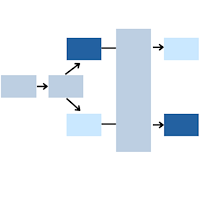Previous Posts
When you’re model building, a key decision is which interaction terms to include. And which interactions to remove. As a general rule, the default in regression is to leave them out. Add interactions only with a solid reason. It would seem like data fishing to simply add in all possible interactions. And yet, that’s a […]
Statistical inference using hypothesis testing is ubiquitous in science. Several misconceptions and misinterpretations of p-values have arisen over the years, which can lead to challenges communicating the correct interpretation of results.
Most of the time when we plan a sample size for a data set, it’s based on obtaining reasonable statistical power for a key analysis of that data set. These power calculations figure out how big a sample you need so that a certain width of a confidence interval or p-value will coincide with a […]
Lest you believe that odds ratios are merely the domain of logistic regression, I’m here to tell you it’s not true. One of the simplest ways to calculate an odds ratio is from a cross tabulation table. We usually analyze these tables with a categorical statistical test. There are a few options, depending on the […]
Interpreting the results of logistic regression can be tricky, even for people who are familiar with performing different kinds of statistical analyses. How do we then share these results with non-researchers in a way that makes sense?
Whenever you use a multi-item scale to measure a construct, a key step is to create a score for each subject in the data set. This score is an estimate of the value of the latent construct (factor) the scale is measuring for each subject. In fact, calculating this score is the final step of […]
Ever hear this rule of thumb: “The Chi-Square test is invalid if we have fewer than 5 observations in a cell”. I frequently hear this mis-understood and incorrect “rule.” We all want rules of thumb even though we know they can be wrong, misleading, or misinterpreted. Rules of Thumb are like Urban Myths or like […]
An extremely useful area of statistics is a set of models that use latent variables: variables whole values we can’t measure directly, but instead have to infer from others. These latent variables can be unknown groups, unknown numerical values, or unknown patterns in trajectories.
Repeated measures is one of those terms in statistics that sounds like it could apply to many design situations. In fact, it describes only one. A repeated measures design is one where each subject is measured repeatedly over time, space, or condition on the dependent variable. These repeated measurements on the same subject are not […]
Data Cleaning is a critically important part of any data analysis. Without properly prepared data, the analysis will yield inaccurate results. Correcting errors later in the analysis adds to the time, effort, and cost of the project.


 stat skill-building compass
stat skill-building compass